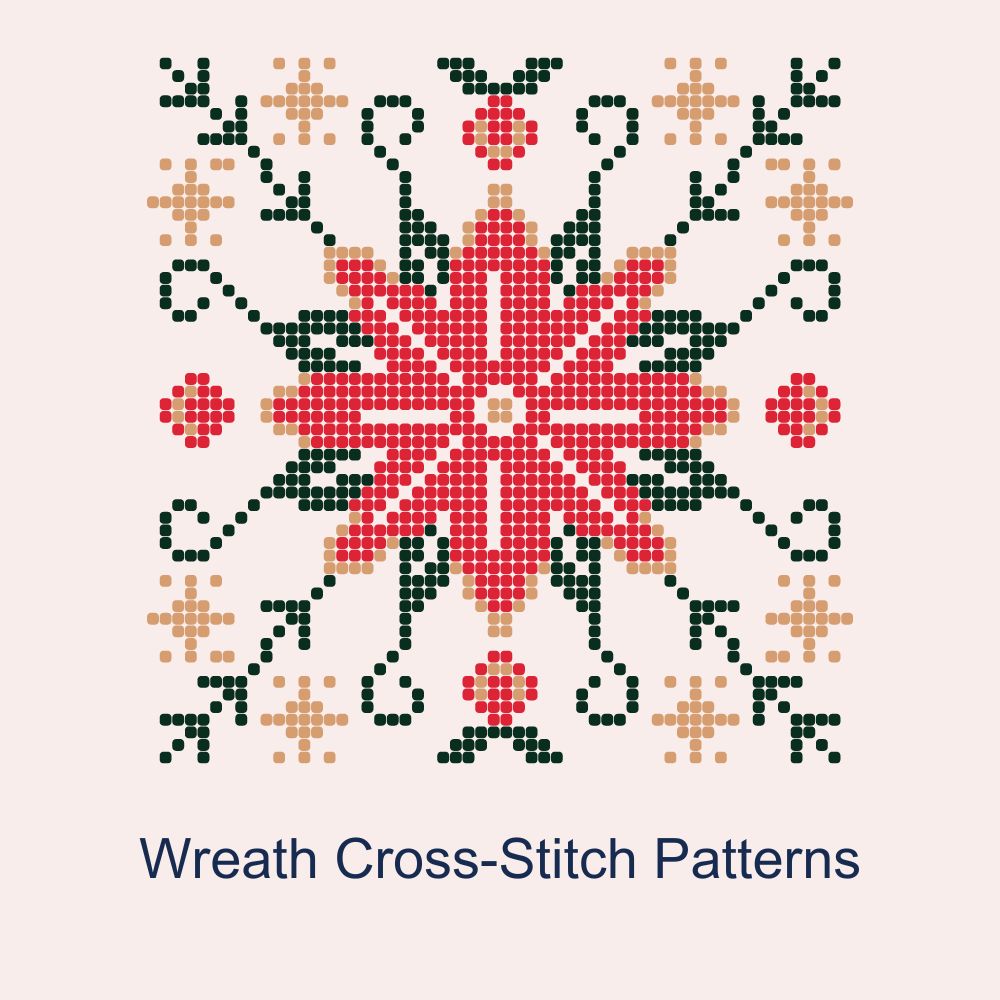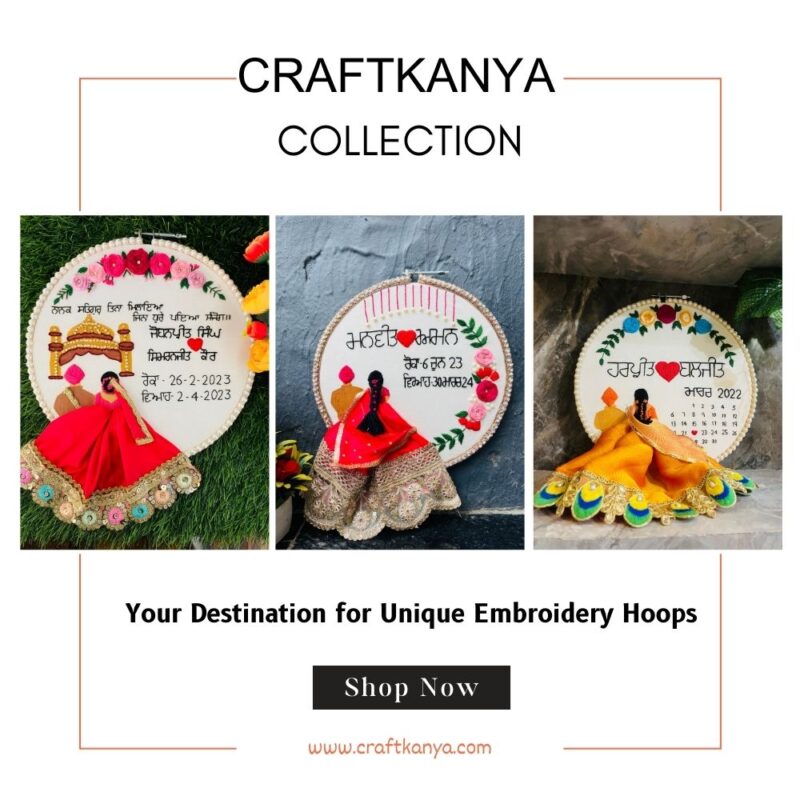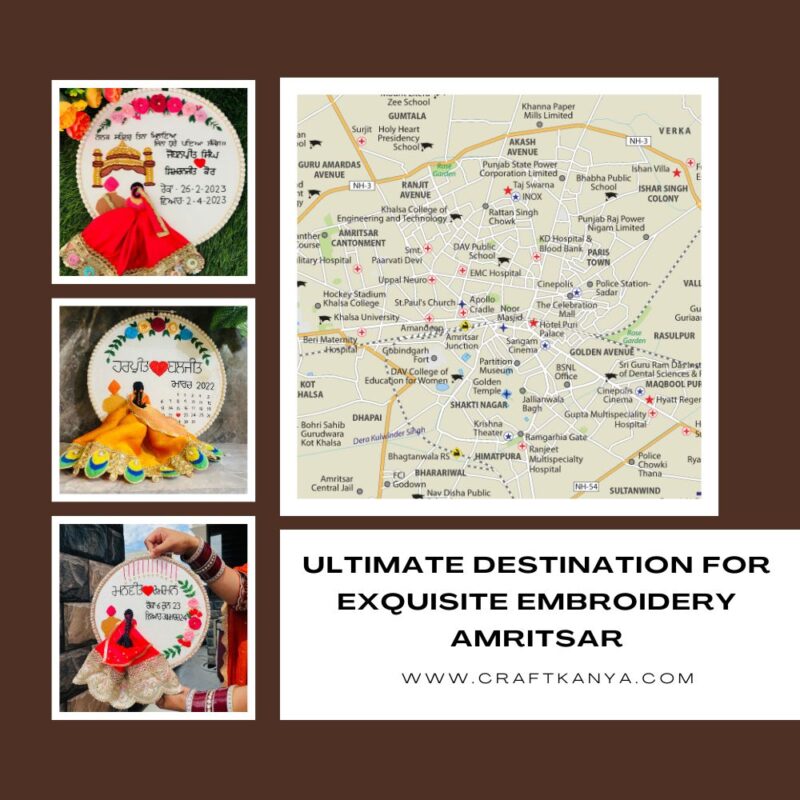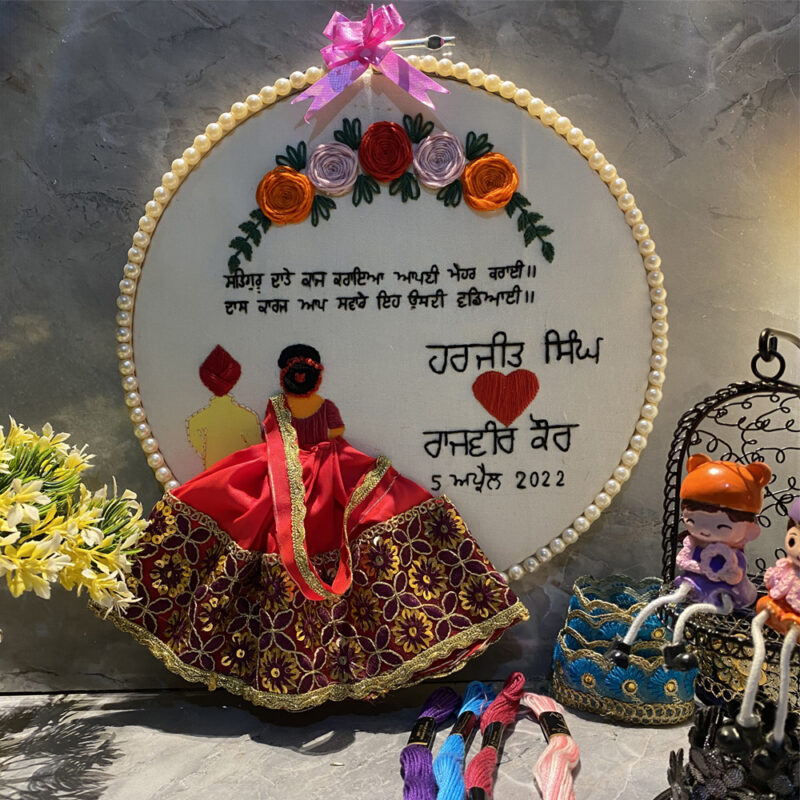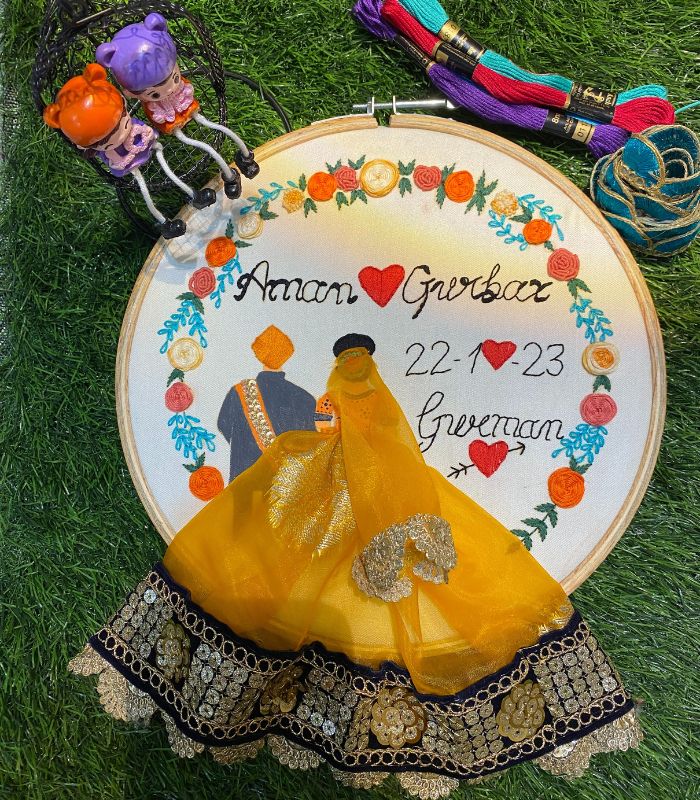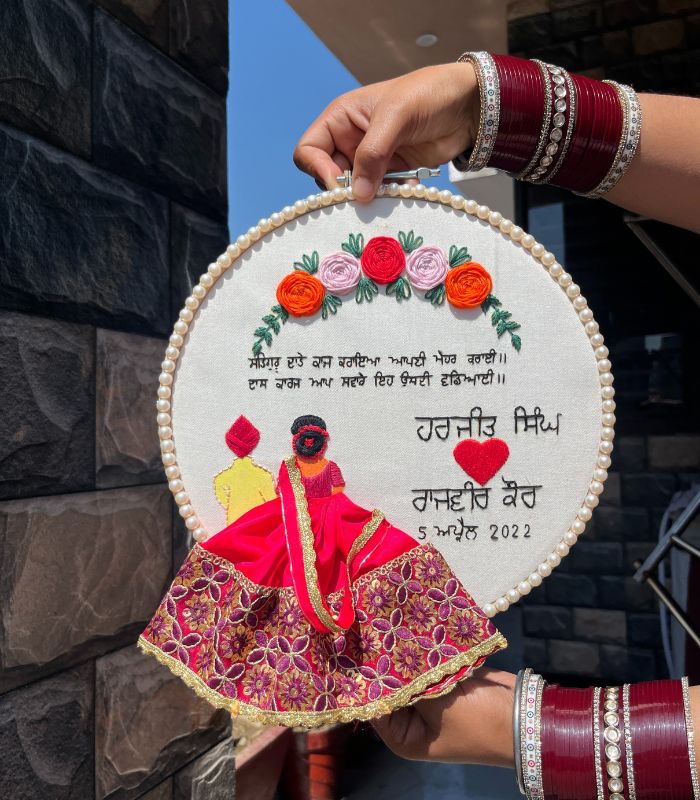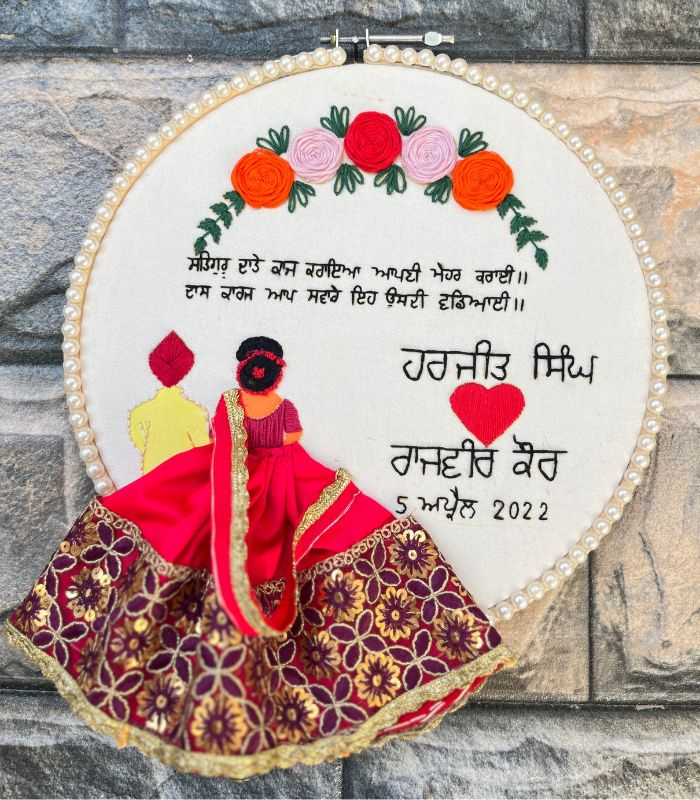- Introduction
- What is Cross-Stitching?
- Why Wreath Cross-Stitch Patterns?
- History of Cross-Stitching
- Origins of Cross-Stitch
- Evolution of Patterns
- Cultural Significance
- Understanding Wreath Cross-Stitch Patterns
- Definition and Features
- Popular Themes and Designs
- Seasonal Wreaths
- Materials Needed for Wreath Cross-Stitching
- Fabric Choices
- Types of Threads
- Needles and Hoops
- Additional Tools
- Choosing the Right Pattern
- Skill Levels
- Pattern Sources
- Customizing Patterns
- Getting Started with Your First Wreath Cross-Stitch
- Preparing Your Fabric
- Reading the Pattern
- Starting the Stitching Process
- Stitching Techniques
- Basic Cross-Stitch
- Backstitching for Detail
- French Knots and Specialty Stitches
- Tips for Perfecting Your Wreath Cross-Stitch
- Keeping Your Tension Consistent
- Working with Multiple Colors
- Avoiding Common Mistakes
- Finishing Touches
- Cleaning and Pressing Your Work
- Framing and Displaying
- Storing Your Finished Piece
- Seasonal and Themed Wreath Patterns
- Christmas Wreaths
- Spring and Floral Wreaths
- Autumn and Halloween Wreaths
- Other Themed Wreaths
- Advanced Wreath Cross-Stitching Projects
- Combining Multiple Patterns
- Incorporating Beads and Embellishments
- Creating Your Own Designs
- Community and Inspiration
- Online Cross-Stitch Communities
- Participating in Stitch-Alongs
- Finding Inspiration
- Cross-Stitching for Relaxation and Mindfulness
- Benefits of Cross-Stitching
- Cross-Stitching as a Meditative Practice
- Personal Stories and Experiences
- Gifting Your Wreath Cross-Stitch Creations
- Personalized Gifts
- Craft Fairs and Selling Your Work
- Creating Keepsakes
- Conclusion
- Summary of Key Points
- Encouragement to Start Stitching
Introduction to Wreath Cross-Stitch Patterns
For generations people have delighted in the lovely and ageless craft of cross-stitching. Crafters can use basic stitches to create stunning, complicated designs by combining creativity and technique. A well-liked subgenre of this activity is wreath cross-stitch patterns, which provide a pleasant and adaptable way to make personalized gifts or adorn your home.
Cross-stitching: What Is It?
In cross-stitching, X-shaped stitches are used to create a picture or pattern on a fabric, typically Aida or evenweave. For more experienced makers, this method offers countless possibilities while yet being approachable for novices.
Why Do Cross-Stitch Patterns Use Wreaths?
Cross-stitch patterns with wreaths are especially popular due to their aesthetic appeal and adaptability. These patterns can be rich and detailed or basic and minimalist, depending on the occasion and ability level of the user.
Cross-Stitching’s Past
The History of Cross-Stitch
Evidence of cross-stitching from ancient civilizations can be discovered in China and Egypt. The craft, which was once used to embellish domestic things, has undergone substantial evolution.
Changes in Patterns Over Time
Cross-stitch patterns were initially very straightforward, but as the art form expanded throughout Europe during the Middle Ages, they evolved into more complex and varied forms. With today’s technology, patterns can be even more intricate and imaginative.
Cultural Importance
In many societies, cross-stitching has cultural importance. In Eastern Europe, for example, certain patterns are handed down through the generations and frequently represent personal narratives and local traditions.
Defining and Characterizing Wreath Cross-Stitch Patterns
Typically, a wreath cross-stitch pattern is a circular design full of many motifs like leaves, flowers, and seasonal accents. These designs might be straightforward or complex, classic or modern.
Trendy Designs and Themes
Holiday and floral wreaths, as well as designs influenced by nature, are popular themes. Every theme has distinctive components that can be altered to suit individual tastes.
Seasonal Garlands
With patterns catered to holidays like Halloween, Easter, and Christmas, seasonal wreaths are particularly well-liked. These designs frequently use colors and symbols that are connected to the particular season or occasion.
Materials Required for Stitching Wreaths: Fabric Selections
Common textiles are linen, evenweave, and aida cloth. The final look of the project can be influenced by the fabric selection, since different types give varying degrees of texture and detail.
Thread Types
Typically composed of cotton, embroidery floss is the common thread used in cross-stitching. Specialty threads can give your work distinctive qualities. Examples of these are metallics and variegated hues.
Hoops and Needles
Tapestry needles are needles with blunt points that are intended to keep the threads from splitting. Frames or hoops are necessary to keep the fabric
Extra Instruments
Pattern markers, scissors, and needle threaders are additional useful equipment. These add-ons help increase accuracy and streamline the sewing process.
Selecting the Proper Pattern Levels of Expertise
It’s crucial to take your skill level into account while selecting a pattern. More experienced stitchers may prefer more intricate patterns, but beginners should start with simpler designs.
Sources of Patterns
You can find patterns online, in books, and in publications. While some websites sell more intricate designs, many others give free templates.
Tailoring Patterns
You can give your creations a unique touch by personalizing the patterns. You can add individuality to your work by varying the colors, adding initials, or adding extra features.
Starting Your First Wreath Cross-Stitch Project: Setting Up Your Fabric
Cut the fabric to size and secure the ends to keep them from fraying before you begin stitching. Moreover, ironing the fabric might aid in producing a smooth surface.
Analyzing the Scheme
It’s important to know how to interpret a cross-stitch pattern. Usually, patterns have symbols to represent various stitches and colors and are color-coded.
Commencing the Stitching Procedure
Locate the center of the fabric and pattern to start. To make sure the design is centered and correctly oriented, begin sewing from the center outward.
Stitching Methods
Simple Cross-Stitching
Making X-shaped stitches is the fundamental cross-stitch technique. Two diagonal lines that cross in the middle make up each stitch.
Stitching Detail-By-Detail
You may embellish your design with outlines and features by backstitching it. Using this method, stitches are made in a straight line, frequently following the pattern’s curves.
Unique Stitches and French Knots
Adding texture and dimension to your craft can be achieved with French knots and other specialized stitches. Although these methods demand practice, they can significantly improve the finished product.
Advice on How to Get Better at Wreath Cross-Stitching
Maintaining Consistent Tension
A smooth and consistent cross-stitch depends on maintaining constant tension. It’s crucial to avoid pulling the thread too tight or too loose because practice makes perfect.
Using a Variety of Colors
Plan your stitching order to reduce the amount of thread changes while working with various colors. This can lessen the possibility of errors and preserve the flow.
Preventing Typical Errors
Inaccurate stitch counts and incorrect color selection are frequent errors. Make frequent double checks of your work to identify and fix mistakes early.
Final Details
Organizing and Pressing Your Work
Once your item is finished, give it a gentle wash to get rid of any dirt or oils. The stitches can be made more flat and set by lightly pressing it with an iron on low heat.
Arrangement and Presentation
Your cross-stitch product will be protected and displayed more readily if it is framed. Select a frame that accentuates the beauty of the design and goes well with it.
Keeping Your Completed Work in Storage
Store your piece out of direct sunlight in a cool, dry area if you plan on not displaying it. Colors and fabric can be preserved with the use of acid-free products.
Patterns for Seasonal and Themed Wreaths
Wreaths for Christmas
Holly, poinsettias, and other festive flowers are frequently seen on Christmas wreaths. These designs can give your home’s interior design a little festive vibe.
Flowers and Springtime Wreaths
Typically, spring wreaths are decorated with vibrant colors, flowers, and butterflies. These patterns honor the beauty and rebirth of springtime.
Halloween and Autumn Wreaths
Halloween wreaths may feature eerie themes like ghosts and bats, whereas autumnal wreaths use warm hues, pumpkins, and foliage.
More Themed Garlands
Wedding and patriotic wreaths, as well as custom designs, are possible additional themes. There are countless options, which promotes extreme creativity and customization.
Advanced Projects for Wreath Cross-Stitching That Combine Several Patterns
Expert stitchers could take pleasure in fusing parts of several patterns to produce a one-of-a-kind creation. This is a creative approach to add even more personalization to your project.
Adding Pearls and Decorative Accents
Beads, sequins, and other embellishments can improve your wreath’s look and feel. Although they need to be stitched carefully, these components can yield beautiful outcomes.
Making Original Designs
Creating your own patterns gives you total creative control. Draw up your ideas on graph paper or with software, then use cross-stitch to make them come to life.
Inspiration and Community
Online Communities for Cross-Stitching
Participating in virtual communities can offer information, motivation, and assistance. Sites such as Facebook, Reddit, and stitch-specific forums are excellent resources for networking with other stitchers.
Taking Part in Stitch-Along Projects
Group projects known as stitch-alongs (SALs) include participants working on the same pattern at the same time. These gatherings can be inspiring and promote a feeling of belonging.
Getting Motivated
One can find inspiration in other crafts, art, or the natural world. Look for hues, patterns, and shapes that pique your imagination.
Stitching with a Cross for Calm and Focus
Advantages of Stitching
Numerous advantages of cross-stitching include reduced tension, sharper attention, and a feeling of accomplishment. It’s a fantastic way to relax at the end of the day.
Using cross-stitch as a Form of Meditation
Cross-stitching is repetitious, which many stitchers find to be soothing. The procedure can aid in mental clarity and relaxation.
Individual Narratives and Experiences
It can be encouraging to hear about other people’s experiences with cross-stitching. Many stitchers provide advice and inspiration to newbies by sharing their experiences on the internet.
Giving Your Personalized Wreath Cross-Stitch Creations as Gifts
A handcrafted cross-stitch wreath can be a kind and unique present. When selecting your design, take the recipient’s likes and tastes into account.
Craft Shows and Selling Your Original Art
Offering your cross-stitch works for sale online or at craft fairs can be a fulfilling way to spread your artistic vision. Superior, one-of-a-kind things frequently draw in customers searching for unusual products.
Making Memorabilia
When they honor significant events or anniversaries, cross-stitched wreaths can become treasured heirlooms. These items can be cherished for a very long time.
In summary
Crafting lovely and significant artwork can be a delightful method to explore your imagination with wreath cross-stitch patterns. There’s always something new to learn and create in this adaptable hobby, regardless of stitching expertise level. So gather your supplies, select a pattern that appeals to you, and begin sewing to create a stunning wreath.
Which kind of fabric works best for cross-stitching?
Aida cloth’s distinct grid structure makes it a popular choice for novices. Expert stitchers prefer linen and evenweave for more intricate work.
How long does it take to cross-stitch a wreath?
The complexity of the pattern and the stitcher’s level of experience determine how long a project takes. A larger, more complex wreath may take several weeks to complete, but a smaller, simpler design might only take a few hours.
Can novices make cross-stitch patterns for wreaths?
Of course! As they develop confidence and expertise, beginners can work their way up to more complicated designs, starting with simpler wreath patterns.
Where can I get free cross-stitch patterns for wreaths?
Many websites, including forums, blogs, and pattern-sharing sites like Pinterest, offer free patterns.
How should I handle my finished cross-stitch project?
After finishing, give it a gentle wash in warm water using a small amount of detergent, and let it air dry. If necessary, press with a warm iron before storing or framing it to keep dust and sunlight off of it.

